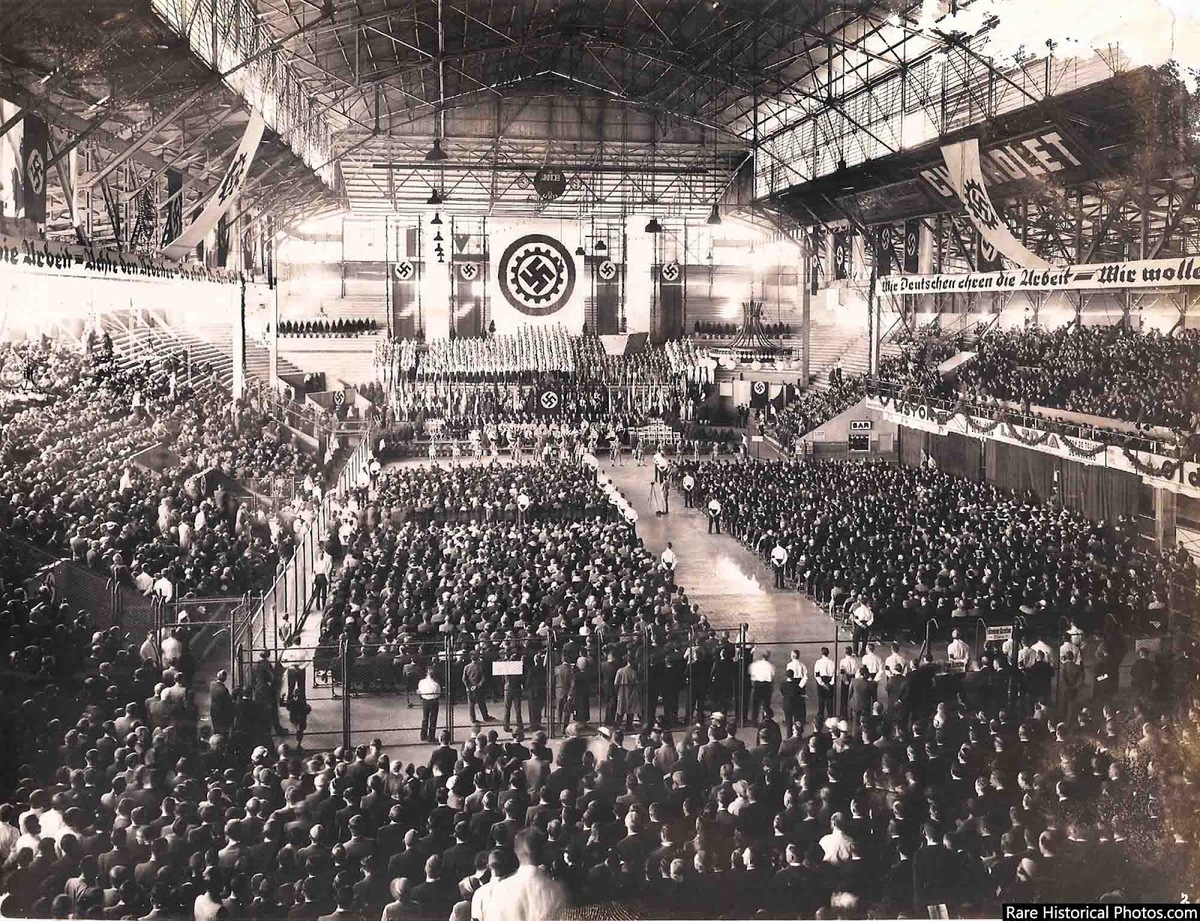Source

Source: Photograph, April 10, 1938. Unknown photographer.
Many German ex-patriot communities, especially in South America, expressed excitement about the “new” Germany. Argentina, home to approximately 250,000 people of German descent in 1940, was the largest of these South American ex-pat communities and could also claim an association with high profile Nazi officials, including the Nazi “blood and soil” ideologist and Minister of Food and Agriculture, Walther Darré, who was born in Buenos Aires. Support for National Socialism was widespread in these communities throughout the 1930s.
In April 10, 1938, Argentina hosted the largest pro-Nazi rally outside of Germany at the Luna Park stadium in Buenos Aires, to celebrate the Anschluss, i.e. the annexation of Austria. About 20,000 people attended the “Day of Unity” rally, chanting and singing songs such as “Deutschland über alles” and the Horst Wessel Lied (an official anthem of Germany from 1930–1945). Representatives from most of the major Party organizations were present, including the Hitler Youth, German Workers Front (Deutsche Arbeitsfront, DAF), veterans of the First World War, and the SA, as well as a number of non-German members of the Argentine Fascist organization, the Alianza de Juventud Nacionalista. The attendees were also from a variety of socio-economic backgrounds, from businessmen such as Richard Staudt, a wealthy German-Argentine businessman, to large numbers of young male laborers. When proceedings turned violent later in the day, interim chancellor of the Foreign Ministry Manuel Alvarado apologized publicly to the German Chargé d’Affaires, criticizing the press’s negative portrayal of the rally which, he argued, failed to “take into account the cordial relations between the two nations.” Episodes such as this rally, by no means isolated to Buenos Ares, serve as reminders that enthusiasm for fascism transcended the borders of Europe.

Source: Photograph, April 10, 1938. Unknown photographer.